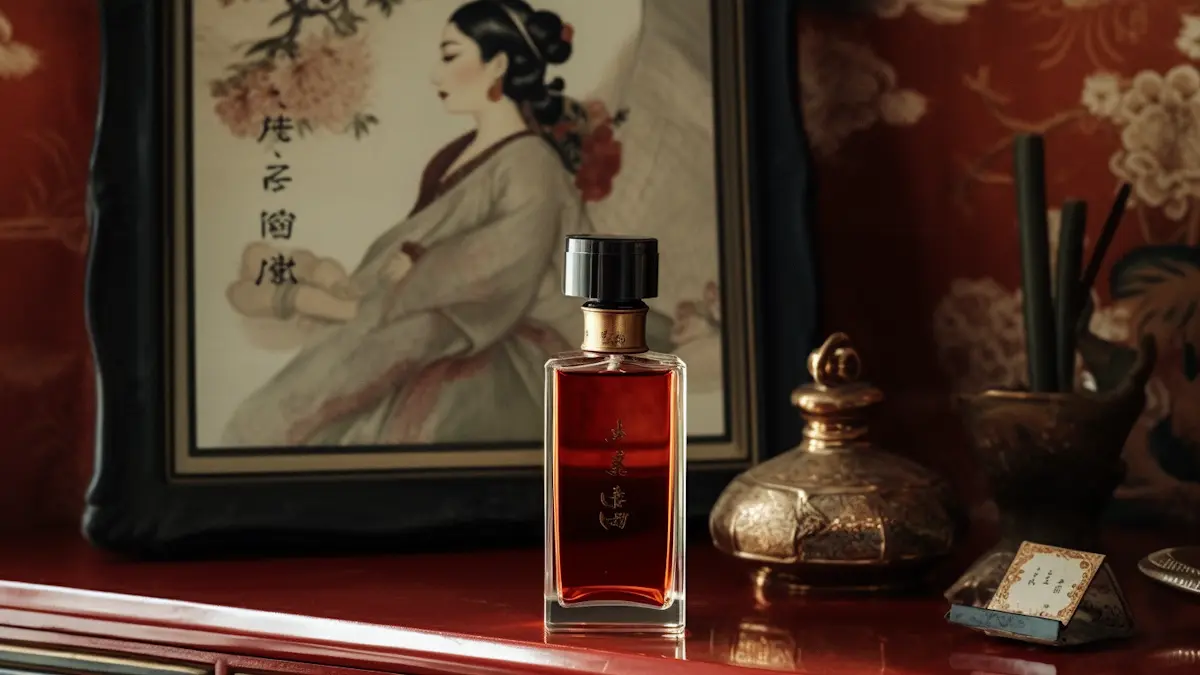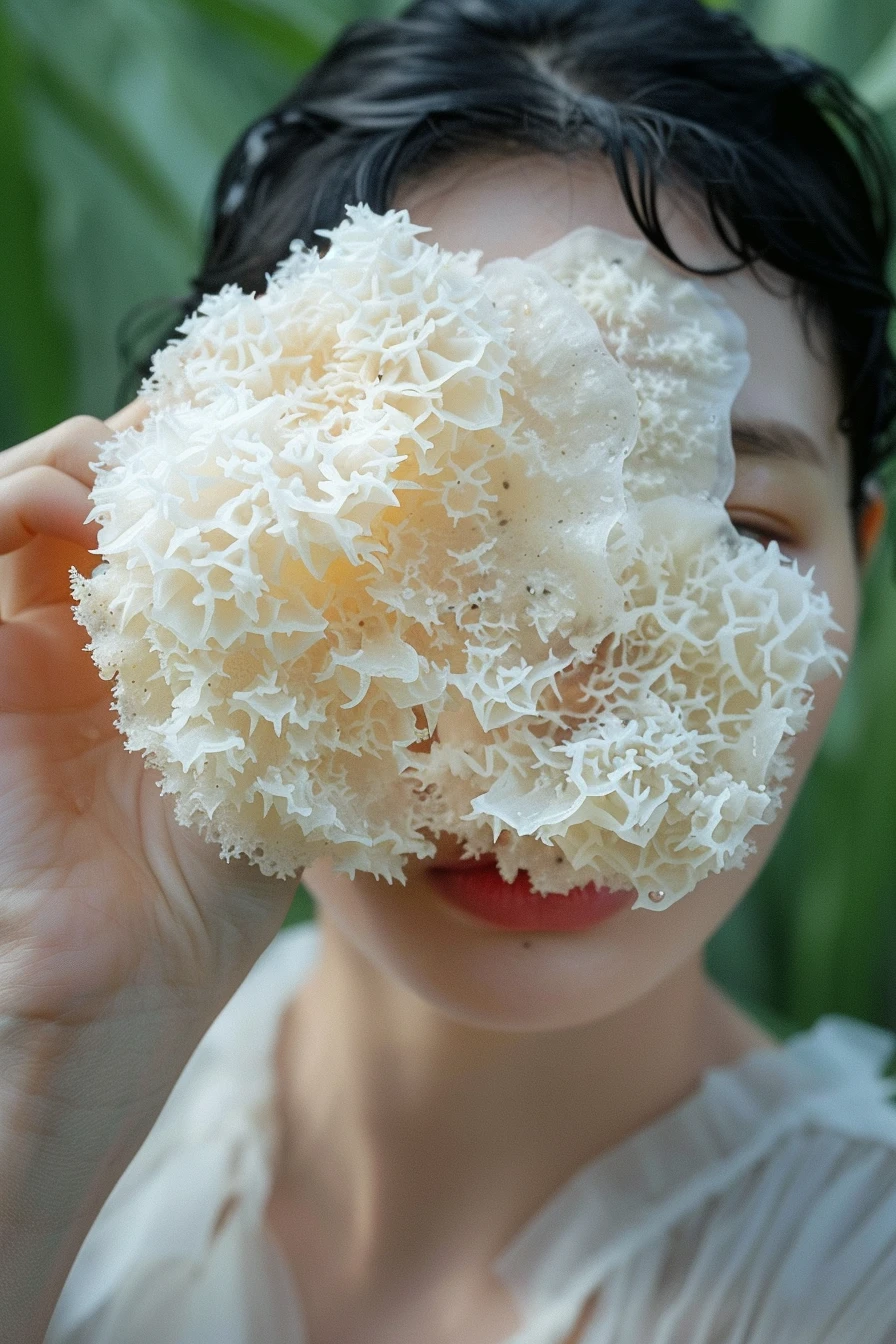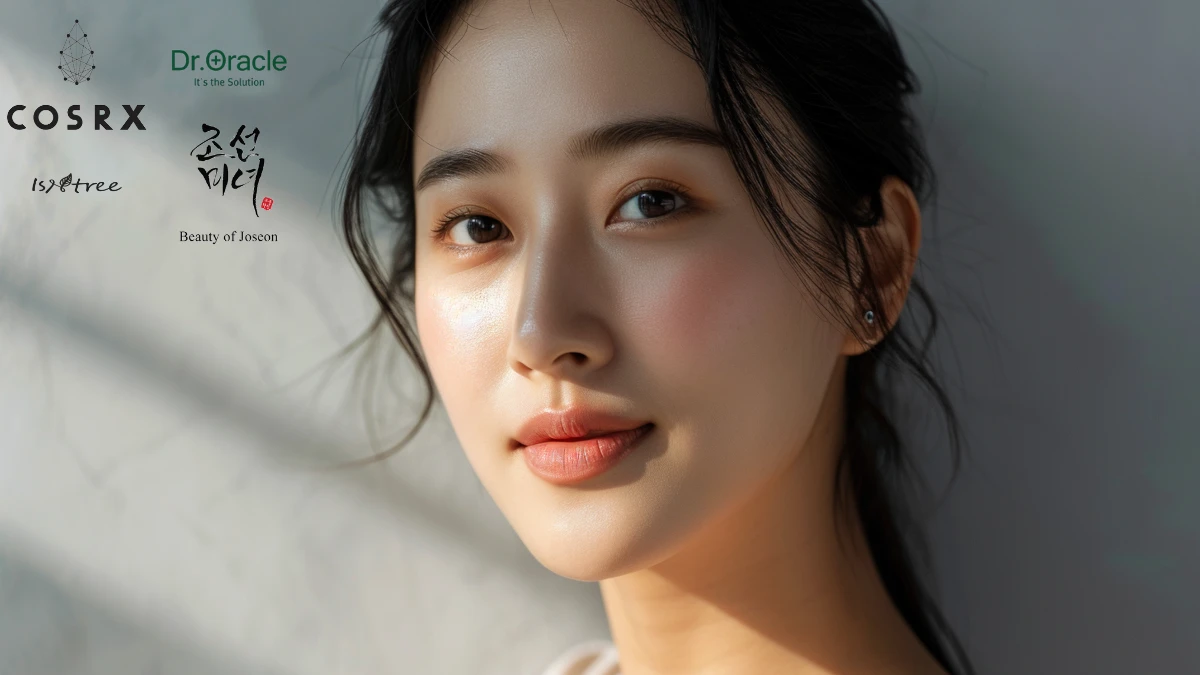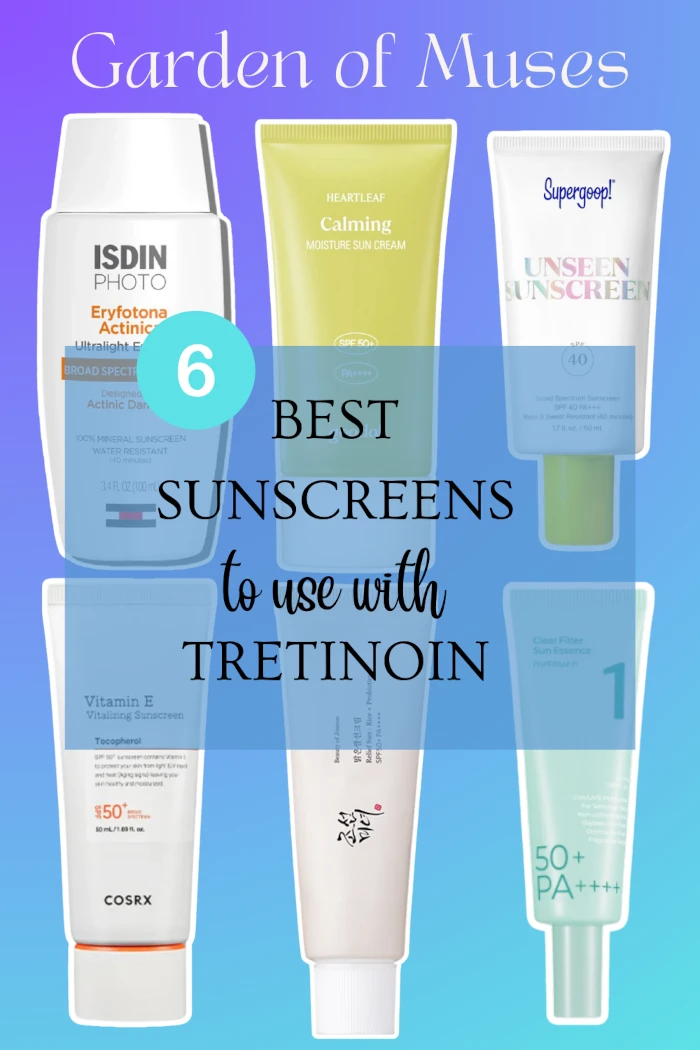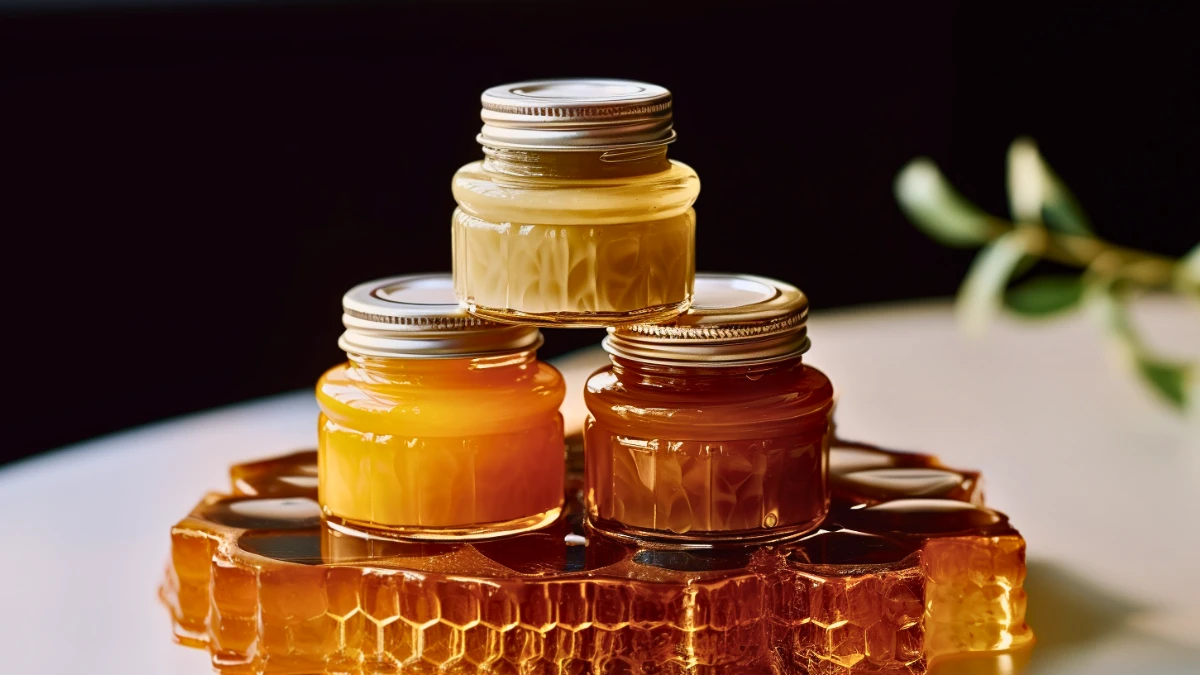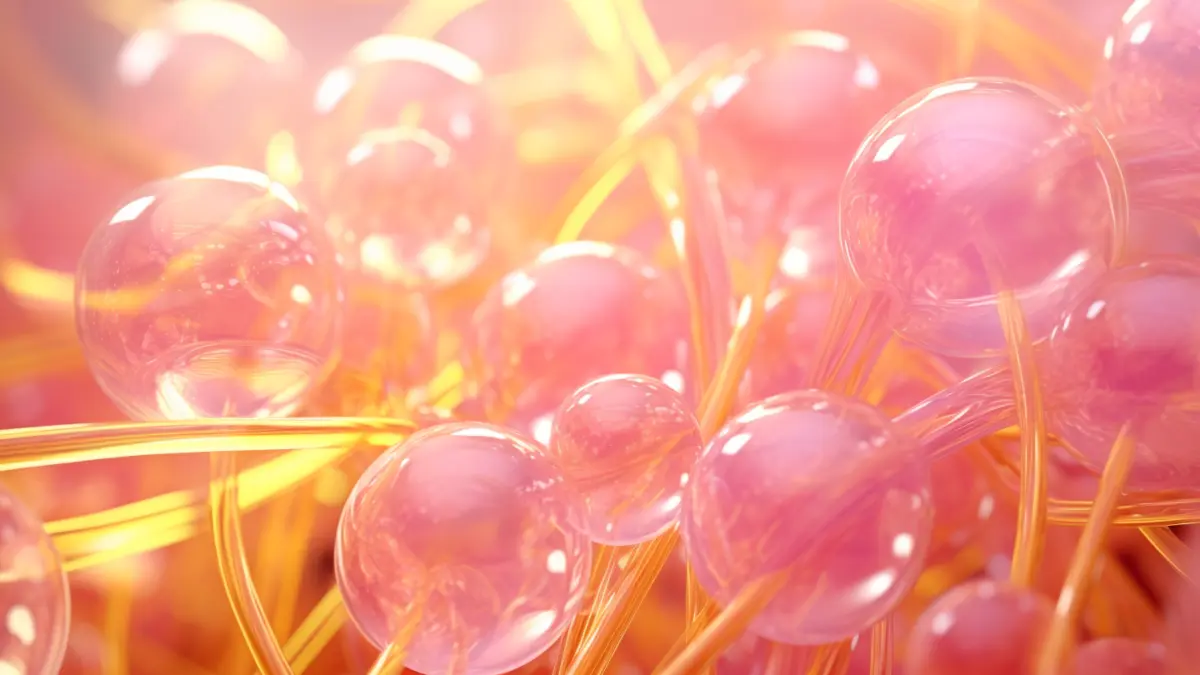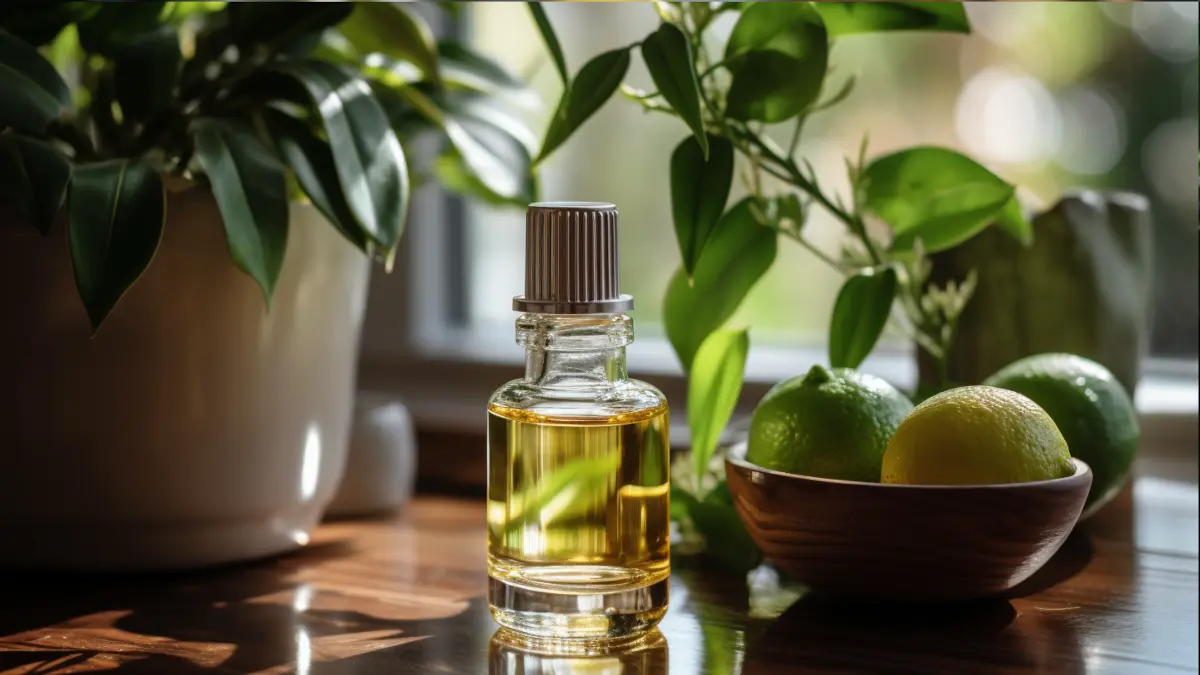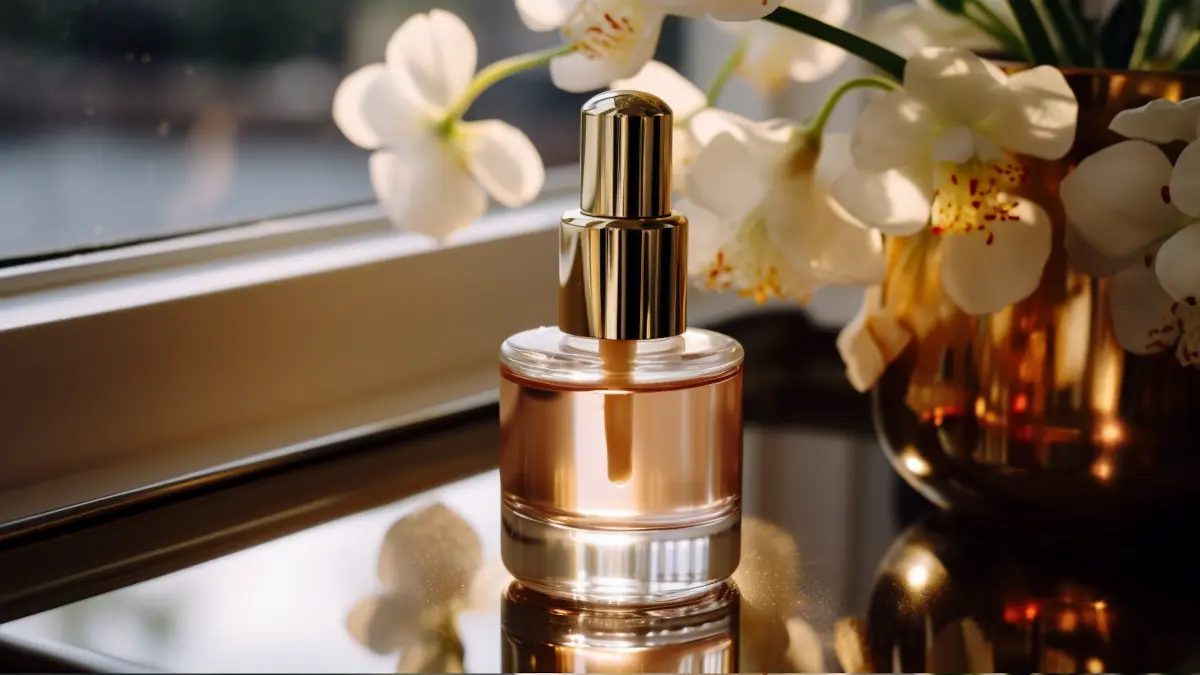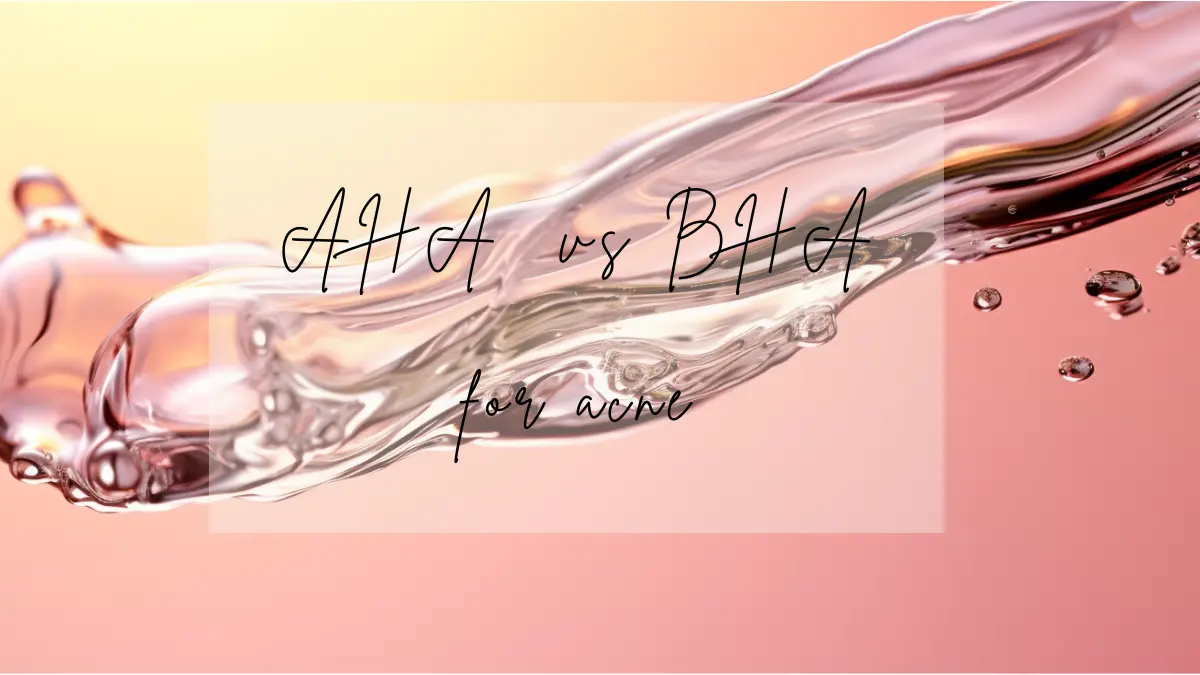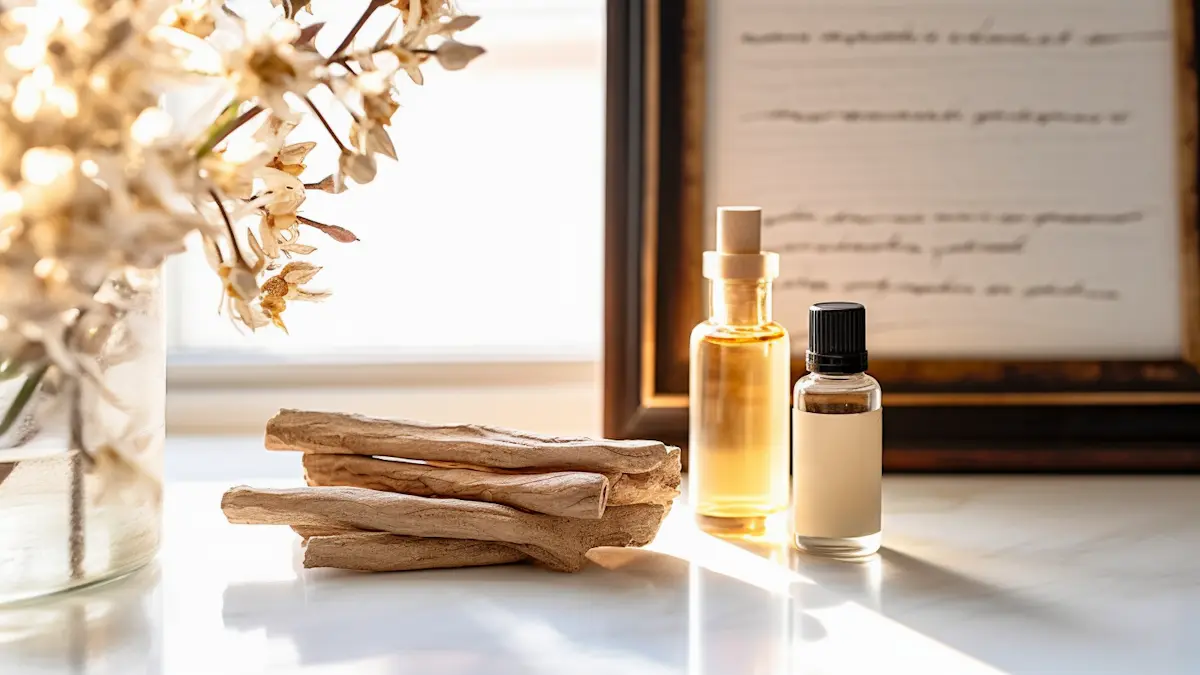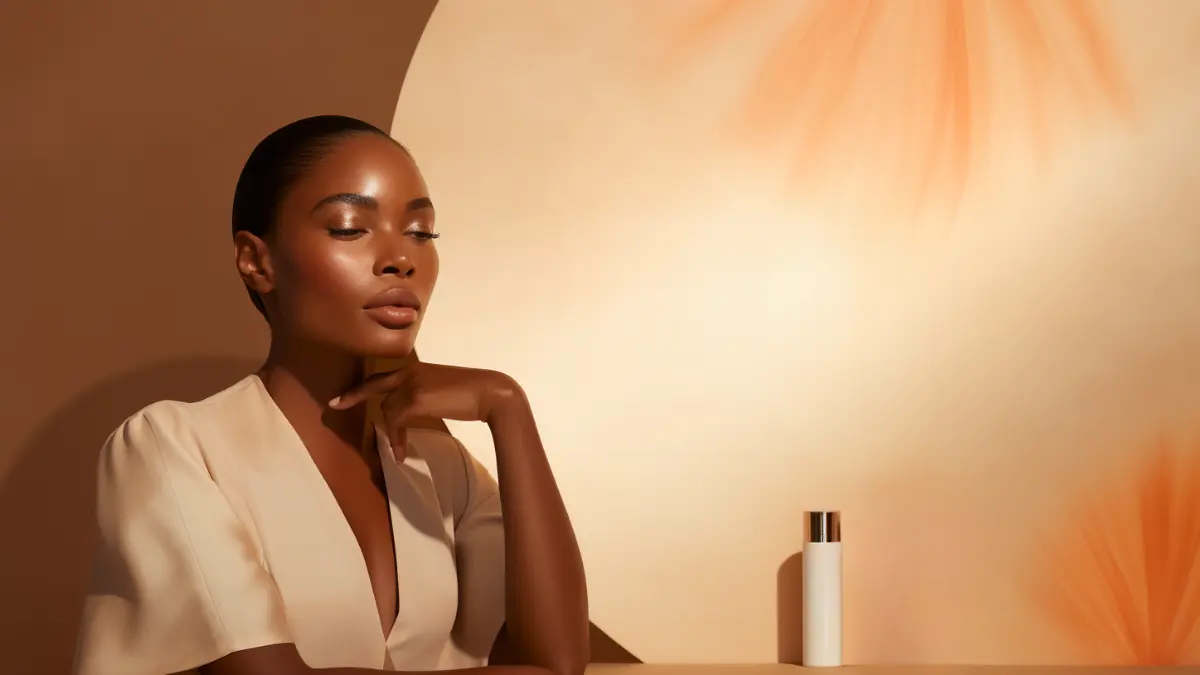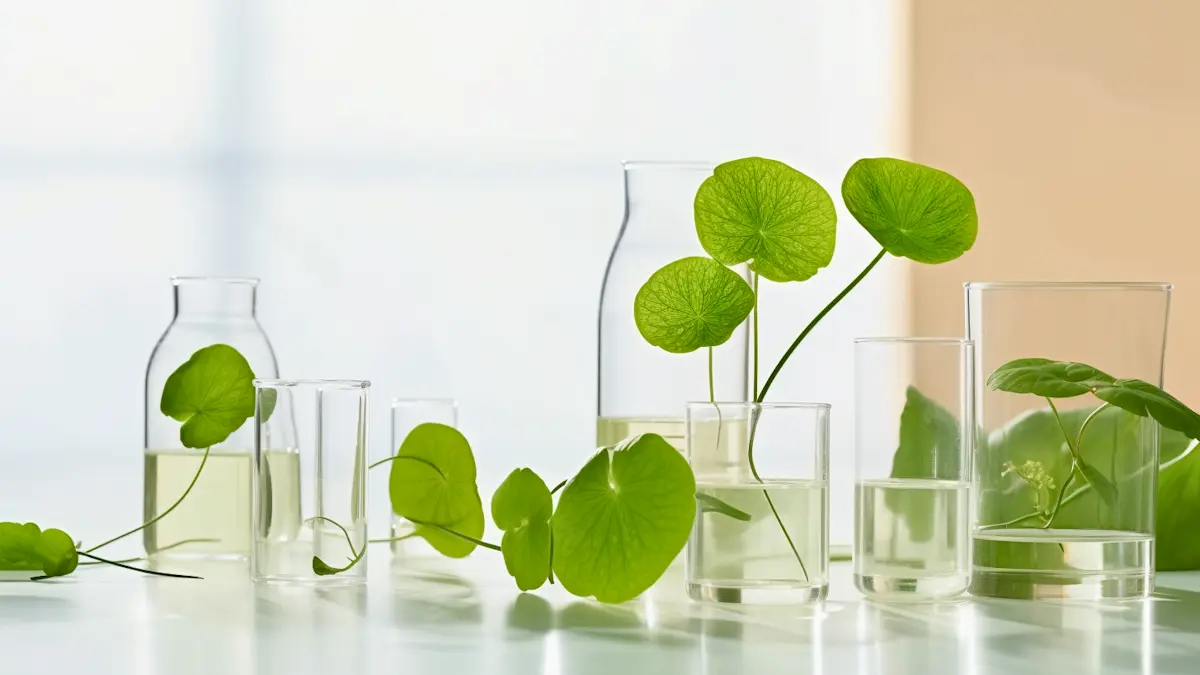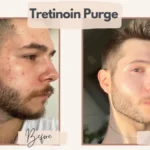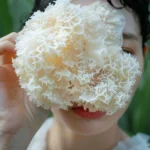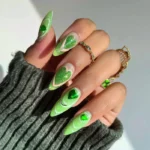Herbal ingredients have been essential in traditional Asian medicine since ancient times. Ginseng has been a legendary healing root vital to traditional Korean healing arts for centuries. Also known as ‘the root of immortality’ for its powerful anti-aging properties, ginseng has been increasingly used in Korean skincare products.
Ginseng has many known health benefits when taken orally, as Asians traditionally consume it. Red ginseng, in particular, replenishes low energy levels, boosts the immune system, and improves blood circulation.
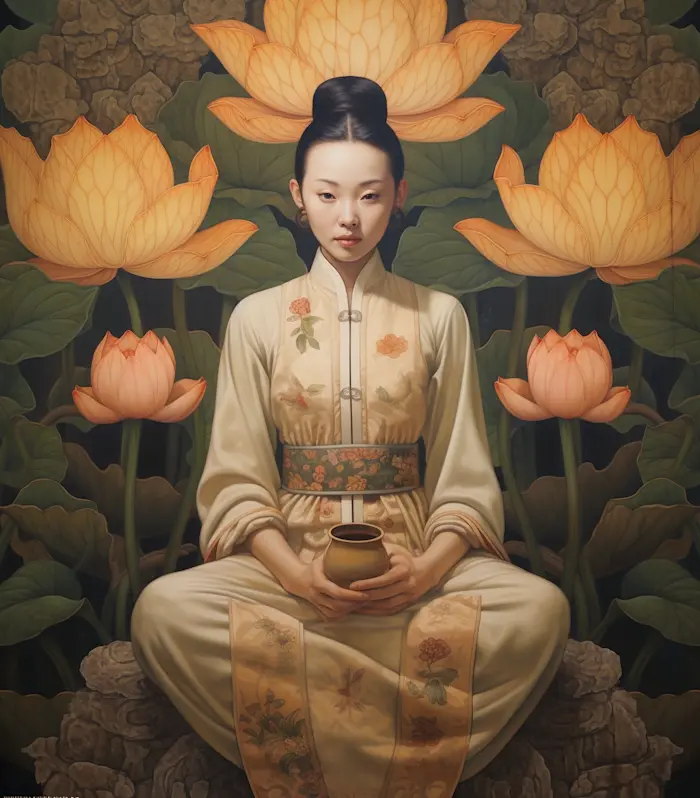
Regarding benefits for our skin, ginseng is equally impressive as an ingredient. Research has found that it has anti-aging, anti-inflammatory, and antioxidant effects on the skin when applied topically due to its many beneficial active constituents.
Guide to Ginseng’s Skin Benefits:
Hanbang in Skincare
Before diving into ginseng’s benefits for the skin, I needed to explain the Korean word hanbang (한방) since hanbang ingredients are a growing trend in Korean skincare.
Hanbang is the traditional herbal medicine of Korea that has been used for centuries to treat illnesses and keep the body and mind healthy. It was initially influenced by Chinese medicine. However, over the centuries, Korean traditional medicine has developed on its own – featuring unique ingredients and preparation methods (such as a heavy emphasis on fermentation).
Hanbang is still a vital part of Korean culture today – many people still visit traditional Korean doctors, regularly drink hanbang tea, and visit hanbang-style spas.
Hanbang is also hugely popular in Korean skincare since it’s been found that many hanbang ingredients also benefit the skin (hydrating, anti-aging benefits). This is because hanbang ingredients are high in polyphenols, plant-derived compounds with potent antioxidant and prooxidant effects, keeping the skin young and healthy.

What Is Ginseng?
Ginseng is a slow-growing perennial plant with fleshy roots that belongs to the genus Panax of the family Araliaceae.
The word ginseng stems from the Chinese word rénshēn (Rén means person, while shēn means plant root). Interestingly, the genus Panax means “all-healing” in Greek (it was so named because Carl Linnaeus was aware of its wide use in Chinese medicine).
Traditional medicine in eastern Asia has used ginseng for over 2000 years, taken orally, primarily via tea and tinctures, to treat various diseases. It has also been used in topical applications to heal wounds and treat skin inflammation.
Ginseng is among the most popular hanbang ingredients in Korean skincare products today. Ginseng’s popularity for skin is all thanks to the Korean skincare brand Sulwhasoo, which set the trend of including hanbang ingredients such as ginseng in skin care products in the 1960s.
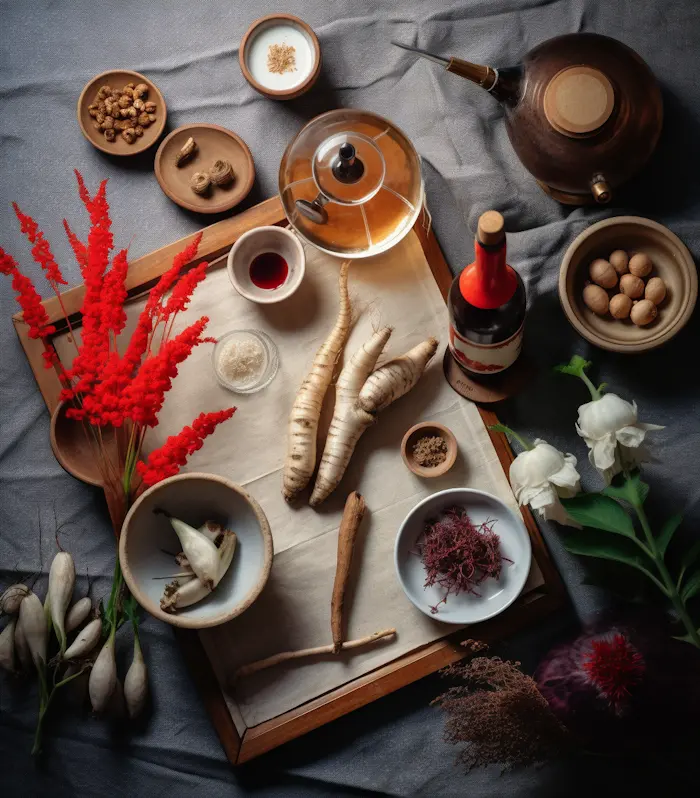
White Ginseng vs. Red Ginseng
The ginseng used in traditional Korean medicine and Korean skincare products is 4-6 years old (after cultivation). There are two types of ginseng: white ginseng and red ginseng.
White ginseng is a 4-6-year-old ginseng root peeled and dried without heating. The moisture content of white ginseng is typically below 12%. On the other hand, red ginseng is a 6-year-old ginseng root steamed at 98-100 degrees Celsius for 2-3 hours and then dried (giving it a red color). The moisture content of red ginseng is typically less than 15%.
Both white and red ginseng have immuno-modulatory, anti-inflammatory, antioxidant, and anti-atopic activities (see more in the section below). However, red ginseng has been found to have more potent pharmacological properties due to the chemical changes that occur during the steaming process (antioxidant-like substances are increased, and catabolic enzymes are inactivated).
In other words, red ginseng is preferred over white ginseng since it appears more effective.
The Active Constituents of Ginseng
So what makes ginseng such a powerful herb, leading to its widespread use in traditional Chinese and Korean medicine and its use in skincare products, too?
About 200 compounds have been isolated from the Korean species of ginseng (named Panax ginseng), including many biologically active ingredients, including ginsenosides, polysaccharides, phytosterols, peptides, polyacetylenes, fatty acids, and polyacetylene alcohols.
Out of these compounds, ginsenosides are believed to be the major biologically active components of ginseng (and the most widely studied). More than 100 ginsenosides are known to exist, and a total of 38 ginsenosides have been isolated from Panax ginseng. Out of these, three are unique to red ginseng.
I would love to go into further detail about ginsenosides and their pharmacological effects, but biochemistry would probably be way too boring for this article. Just know that these are most likely the compounds responsible for many of the benefits of ginseng.
Although not as thoroughly researched, studies have shown that other major bioactive constituents of Panax ginseng (polysaccharides and phenolic compounds) have potent antioxidant effects.
Ginseng Skin Benefits
Ginseng has powerful benefits internally when eating or drinking it, strengthening the immune system. It is used in shampoo to promote hair growth and prevent hair loss.
Regarding skincare, in Korean herbal medicine books, ginseng is considered an “herb of perpetual youth” that helps lighten hyperpigmentation and soften wrinkles. The legend says Hwang Jini, the most beautiful woman in the Joseon Dynasty, used a ginseng decoction as bath water. The rich saponin in ginseng helps quickly supply moisture and maintains it deep inside the skin for a long time to help create healthy skin.
Today, the active constituents of ginseng, particularly ginsenosides, and their pharmacological effects on the body are well-studied. Research is also beginning to show that ginseng may benefit the skin, particularly with anti-aging benefits.

Anti-aging Benefits of Ginseng
Several factors are involved in skin aging (such as genetics, environmental stress, hormonal alterations, and metabolism). As we all know (and fear), as we age, our skin becomes thin, dry, and loses its elasticity and structural regularity (what we notice as wrinkles and sagging skin).
When researching other articles for Garden of Muses, I usually might find a handful of studies about a particular ingredient and its effects on the skin. However, there are endless studies in the case of ginseng and ginsenosides. So many that I had to figure out where to start.
These studies have shown over and over again that the ginsenosides present in Panax ginseng can prevent the aging of the skin – mainly by reducing wrinkles and preventing UV radiation-induced skin damage (also known as photo-aging).
The biochemical pathways by which ginsenosides achieve wrinkle reduction still need to be fully understood. Different ginsenosides may play different roles in the anti-aging process, including the suppression of collagen destruction (as opposed to increasing collagen production) and the up-regulation of hyaluronic acid generation. The circulation-boosting qualities of ginseng can also help improve skin firmness and potentially diminish fine lines.
Moreover, its high antioxidant content helps fight off free radicals, one of the leading causes of premature aging.
If you’d like to go down the rabbit hole of research focusing on the anti-aging effects of ginsenosides, then two good studies are this one and this one. Suppose you’re less obsessed with biochemistry than I am. In that case, all you need to know is that ginseng is an effective skincare ingredient for preventing skin aging – mainly by protecting the skin against UVB-induced damage (wrinkle formation and reduction in skin elasticity).

Anti-acne Properties of Ginseng
Although most of the research surrounding ginseng is focused on the herb’s anti-aging benefits, some research is emerging that it may also treat acne. In particular, recently published research has found that red ginseng shows the same or even better antimicrobial activity against acne-causing bacteria (Propionibacterium acnes) than benzoyl peroxide or azelaic acid. The study found that the compounds panaxynol and panaxydol are the active constituents of red ginseng, responsible for its antimicrobial activity.
This recent finding of red ginseng’s anti-acne properties means that it may be the ideal skincare ingredient for people wishing to address skin aging and acne simultaneously.
I have acne-prone skin, which is starting to show signs of aging (it’s my fault because I never wore sunscreen until now). Unfortunately, many skincare products tend to break me out, making it hard to address my anti-aging skin concerns – so I’m stuck between a rock and a hard place. But ginseng might be my answer!

Ginseng May Be Beneficial in the Treatment of Hyperpigmentation
Hyperpigmentation is one of my biggest skin concerns. It’s the souvenir I got from baking under the Indonesian sun without any protection (hello, sun spots) and having children (hello, melasma). Thanks for nothing, hormones, and UV rays!
Hyperpigmentation is my nemesis, so I always search for ways to even out my skin tone. You can read my main article on how to treat hyperpigmentation. So, when I heard that ginseng might be effective for fading hyperpigmentation, I had to investigate.
Luckily, I found a few recent studies that indicate that ginseng is, in fact, effective at treating hyperpigmentation, with one study, in particular, showing that red ginseng reduced the appearance of melasma in 91% of patients when administered orally over 24 weeks.
Many studies have looked into how ginseng prevents hyperpigmentation. So far, the research shows that more than one constituent of ginseng prevents melanin production. For example, it has been determined that various compounds found in ginseng (including phenol compounds, ginsenosides, and cinnamic acid) inhibit tyrosinase activity (the enzyme involved in melanin production) via many different molecular pathways.
There is also evidence that the ginsenosides found in red ginseng prevent melanin production through their anti-inflammatory activities on melanocyte (melanin-producing cell) physiology. However, this biochemistry is far from this article’s scope.
Interestingly, the leaves and berries of the ginseng plant also have potent inhibitory effects against melanin production. One study found that the leaves of Panax ginseng contain a compound called p-coumaric, which was found to inhibit tyrosinase to a greater extent than kojic acid and arbutin.
Although that sounds confusing and complicated, the take-home message is that lots of research shows that ginseng may be a very effective ingredient in preventing hyperpigmentation due to its many biologically active compounds.
Best Korean Ginseng Skin Care Products in [current_year]
Now that you know what ginseng is and the fantastic benefits it can provide for your skin, I bet you’re excited to try it yourself. So, I’ve found some fantastic Korean skincare products containing ginseng.
1. Beauty of Joseon Ginseng Cleansing Oil
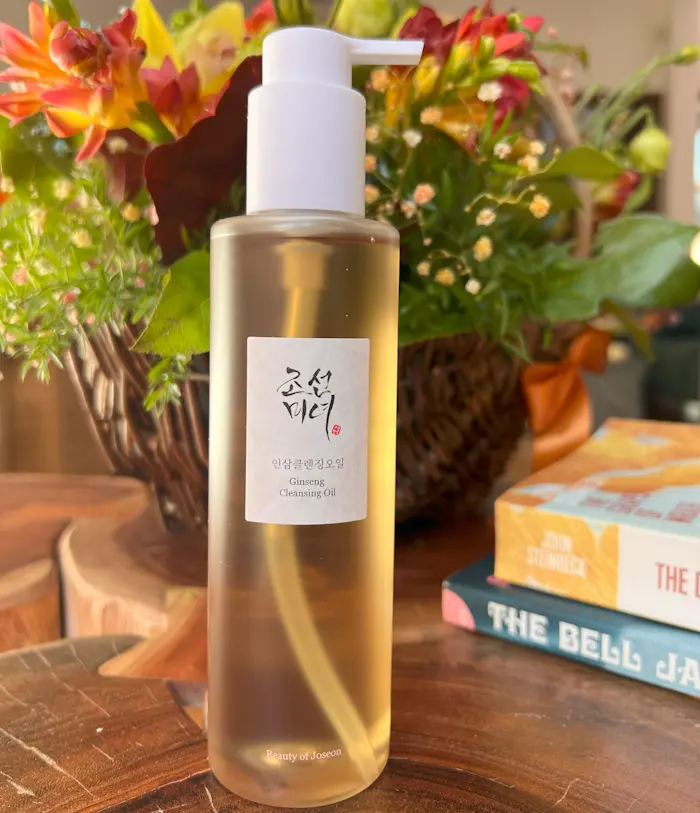
Just as the name suggests, products from the brand Beauty of Joseon are inspired by the aesthetic preferences of Korean women during the Joseon Dynasty, who focused heavily on taking care of their skin.
I’m now reading about the Joseon Dynasty. I love the way the brand has decided to market its skincare products. All the products from the Beauty of Joseon brand feature hanbang ingredients, and the packaging is also gorgeous (although quite simple compared to some of the other products I mention in this article).
However, this brand has become hugely popular in the West and is available in most online stores selling Korean skincare products.
Now that you’ve read about ginseng’s benefits for the skin and you’re committed to introducing more and more ginseng into your skincare routine, you should start with the first step, in any Korean routine, the oil cleansing step.
The product’s namesake is in the formulation as Panax Ginseng Seed Oil, Panax Ginseng Root Extract, and Panax Ginseng Berry Extract.
Beauty of Joseon Ginseng Cleansing Oil is a fabulous cleansing oil that removes the day’s makeup and grime off my face. The thick texture of this cleansing oil makes it a good massage oil to work into the skin to remove everything off my face as a first cleanse in the evening. Upon contact with water, it becomes a milky texture and emulsifies, leaving little to no residue on the complexion. Once everything has been washed off and removed, my skin doesn’t feel dry, stripped, or irritated. Instead, it feels plump, hydrated, soft, and nourished.
If I work the Beauty of Joseon Ginseng Cleansing Oil around my eye area, it does not seem to irritate my eyes as some cleansing oils do. It’s excellent for getting off mascara and removes all of my makeup without tugging. If you want, read Mia’s Beauty of Joseon Ginseng Cleansing Oil Review.
Price: $20
Beauty of Joseon Ginseng Cleansing Oil Ingredients List (last checked [current_year])
Glycine Soja (Soybean) Oil, Cetyl Ethylhexanoate, Sorbeth-30 Tetraoleate, Olea Europaea(Olive) Fruit Oil, Sorbitan Sesquioleate, Helianthus Annuus (Sunflower) Seed Oil, Tocopherol, Panax Ginseng Seed Oil, Ethylhexylglycerin, Eclipta Prostrata Extract, Panax Ginseng Root Extract, Melia Azadirachta Leaf Extract, Melia Azadirachta Flower Extract, Coccinia Indica Fruit Extract, Amber Powder, Moringa Oleifera Seed Oil, Solanummelongena (Eggplant) Fruit Extract, Curcuma Longa (Turmeric) Root Extract, Ocimum sanctum Leaf Extract, Corallina Officinalis Extract, Bixa Orellana Seed Oil, Panax Ginseng Berry Extract, Panax Ginseng Root Extract, Butylene Glycol, Water, 1,2-Hexanediol.
Emollient Moisturizer/Humectant Herbs Brightening
2. Beauty of Joseon Dynasty Cream
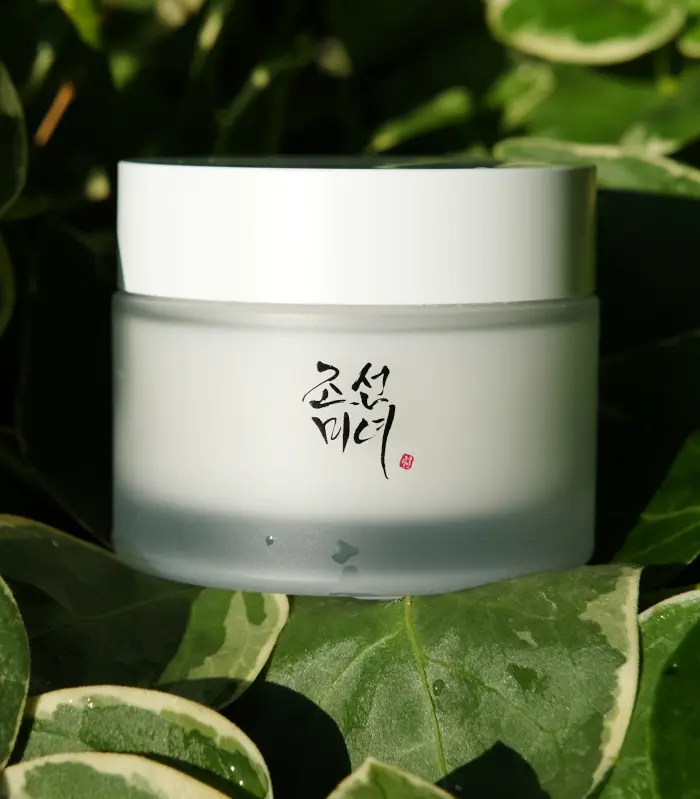
I went down a rabbit hole for about an hour just now, reading many positive reviews on Dynasty Cream. I haven’t tried this cream yet, but I’m considering buying myself a jar as it is very affordable.
This sounds like the most luxurious cream! It contains ginseng and one of my favorite skincare ingredients: rice extract, niacinamide, glycerin, three types of hyaluronic acid, ceramide NP, and honey extract.
These ingredients make this cream incredibly moisturizing, nourishing, and brightening. It’s also said to improve the skin’s moisture barrier and improve the skin’s elasticity.
This cream has a unique texture. It’s slightly stringy or tacky – although not sticky. I’d say it’s comparable to snail mucin and absorbs quickly into the skin, leaving it feeling hydrated and plump for hours.
You can read Mia’s Beauty of Joseon Dynasty Cream review if you’d like to read more about this beautiful hanbang cream.
Price: $23
Beauty of Joseon Dynasty Cream Ingredients List (last checked [current_year])
Water, Oryza Sativa (Rice) Bran Water, Glycerin, Panax Ginseng Root Water, Hydrogenated Polydecene, 1,2-Hexanediol, Niacinamide, Squalane, Butylene Glycol, Propanediol, Dicaprylate/Dicaprate, Cetearyl Olivate, Sorbitan Olivate, Ammonium acryloyldimethyltaurate/VP Copolymer, Xanthan Gum, Acrylates/C10-30 Alkyl Acrylate Crosspolymer, Tromethamine, Carthamus Tinctorius (Safflower) Seed Oil, Hydrogenated Coconut Oil, Glyceryl Acrylate/Acrylic Acid Copolymer, Ethylhexylglycerin, Adenosine, Caprylic/Capric Triglyceride, Disodium EDTA, Hyaluronic Acid, Hydrolyzed Hyaluronic Acid, Sodium Hyaluronate, Honey Extract, Ceramide NP, Hydrogenated Lecithin, Coptis Japonica Root Extract, Raphanus Sativus (Radish) Seed Extract, Lycium Chinense Fruit Extract, Theobroma Cacao (Cocoa) Seed Extract, Phellinus Linteus Extract, Dextrin, Scutellaria Baicalensis Root Extract.
Humectant/Moisturizing Active Herbs
3. Donginbi 1899 Signature Oil
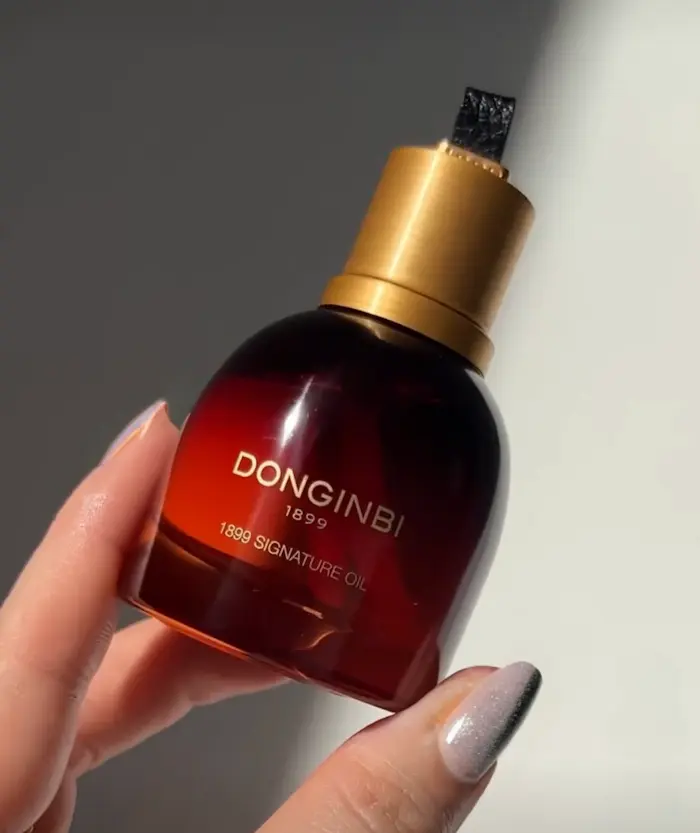
Donginbi is a luxury brand well-known in Korea for its premium anti-aging ginseng skincare range. Donginbi products are so loved in Korea that people often gift them to each other. The Korean Ginseng Corp owns Donginbi, called CheongKwanJang, in South Korea, the official red ginseng trading company of South Korea.
Donginbi uses only the 6-year-old red ginseng, the most mature type of ginseng in their products, which is considered the most effective type for well-aging.
Donginbi 1899 Signature Oil is one of the most popular Donginbi skincare products. It contains the highest concentration of red ginseng (in the form of red ginseng oil) out of all the Donginbi skincare products. The Donginbi website says one ginseng root goes into one drop of this oil!
Donginbi 1899 Signature Oil has an extremely light texture that forms a fast-absorbing thin layer that seamlessly blends into the skin for deep hydration and firmness to improve skin aging.
Apart from containing a few high-quality natural oils high in essential fatty acids (Omega 6 and Omega 3), the oil has a ton of fragrance, so I do not recommend it for people with sensitive skin.
Price: $186
Donginbi 1899 Signature Oil Ingredients list (last checked [current_year])
Panax Ginseng Root Oil, Limnanthes Alba(Meadowfoam)Seed Oil, Simmondsia Chinensis(Jojoba)Seed Oil, Prunus Amygdalus Dulcis (Sweet Almond)Oil, Squalane, Coco Caprylate/Caprate, Caprylic/Capric Triglyceride, Prunus Domestica Seed Oil, Tocopherol, Hydrogenated Olive Oil Unsaponifiables, Glyceryl Caprylate, Caprylyl Glycol, Fragrance, Alpha-Isomethyl Ionone, Benzyl Salicylate, Cinnamal, Cinnamyl Alcohol, Citronellol, Coumarin, Limonene, Eugenol, Geraniol, Hexyl Cinnamal, Hydroxycitronellal, Isoeugenol, Linalool.
Ingredients referred from the Donginbi official website.
Emollients Herbs Humectant/Moisturizing Fragrance
Sulwhasoo Concentrated Ginseng Renewing Cream
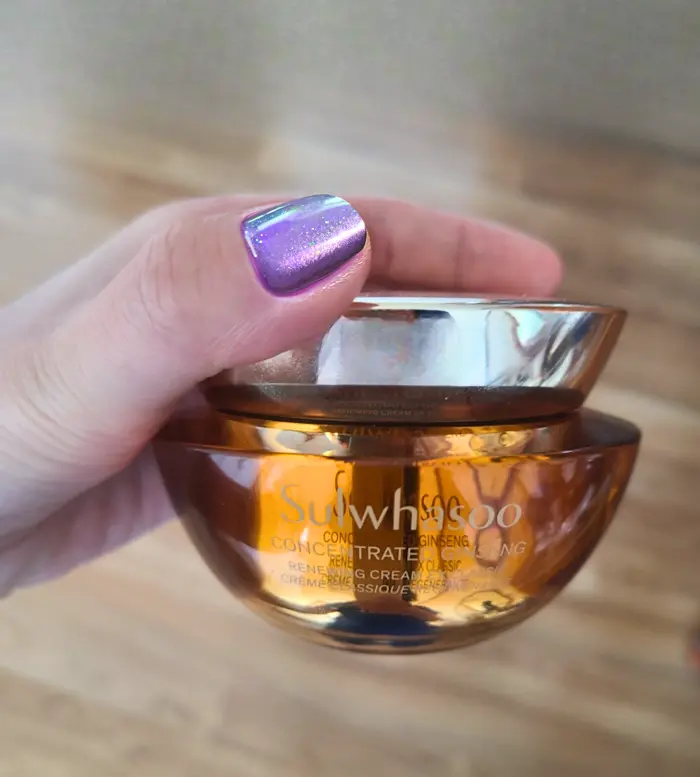
I mentioned above that Sulwhasoo is the brand that started incorporating ginseng into its skincare products. This brand is, therefore, a favorite choice for many people wanting to incorporate some hanbang into their skincare routine.
Sulwhasoo Concentrated Ginseng Renewing Cream is a great anti-aging cream if you’re looking for an anti-aging power horse. It contains a high concentration of hydroponically grown red ginseng (the leaf, root, and stem).
It also contains a bunch of other beneficial hanbang herbal ingredients, as well as the following:
- glycerin
- squalane (a powerful hydrating and soothing ingredient)
- honey
- cocoa extract, a potent anti-inflammatory for the skin with strong protective, soothing, and skin-restoration properties;
- peptides
Sulwhasoo Concentrated Ginseng Renewing Cream makes my skin look younger, improving wrinkles, sagging skin, and skin dryness. It also protects the skin from damage (such as UV damage), making it a somewhat double anti-aging cream.
Improve the look of wrinkles and firmness with Ginsenomics™, our signature ginseng saponin, while ginseng peptides help protect skin from environmental stressors.
us.sulwhasoo.com
The Sulwhasoo website gives the results of a study where 31 Asian women ages 37 to 59 used this cream. These are the results that were seen after using the Sulwhasoo Concentrated Ginseng Renewing Cream for four weeks:
- A 10% improvement in skin firmness
- A 10% improvement in elasticity
- A 25% noticeable reduction in fine lines and wrinkles
Even though it is pricey compared to some other Korean moisturizers, you seem to get what you pay for – meaning that the results you see are nothing short of amazing.
If you want to try this miracle-working cream, I found the lowest price on Amazon* (the official brand store).
Price: $260
Sulwhasoo Concentrated Ginseng Renewing Cream Ingredients list (last checked [current_year])
Water, Butylene Glycol, Dimethicone, Glycerin, Triethylhexanoin, Squalane, Hydrogenated Polyisobutene, 1,2-hexanediol, Vinyl Dimethicone/Methicone Silsesquioxane Crosspolymer, Hydroxyethyl Acrylate/Sodium Acryloyldimethyl Taurate Copolymer, Cetearyl Olivate, Cetearyl Alcohol, Methoxy Peg-114/Polyepsilon Caprolactone, Sorbitan Olivate, Glyceryl Stearate, Stearic Acid, Palmitic Acid, Arachidyl Alcohol, Behenyl Alcohol, Fragrance, Hydrolyzed Ginseng Saponins (Enzyme-treated Red Ginseng Saponins), Glyceryl Caprylate, Arachidyl Glucoside, Phenoxyethanol, Sorbitan Isostearate, Polysorbate 60, Ethylhexylglycerin, Disodium Edta, Sodium Stearoyl Glutamate, Linalool, Panax Ginseng Root Extract, Dextrin, Theobroma Cacao (Cocoa) Extract, Sodium Chloride, Honey, Limonene, Hydrogenated Lecithin, Rehmannia glutinosa Root Extract, Panax Ginseng Flower Extract, Paeonia Lactiflora Root Extract, Lilium Candidum Bulb Extract, Polygonatum Odoratum Rhizome Extract, Myristic Acid, Arachidic Acid, Glucose, Nelumbo Nucifera Flower Extract, Phytosphingosine, Sodium Polyaspartate, Caprylyl Glycol, Tocopherol, Sodium Methyl Stearoyl Taurate, Acetyl Heptapeptide-4, Acetyl Hexapeptide-8, Sodium Hydroxide, Acetyl Octapeptide-3.
Ingredients referred from the Sulwhasoo official website.
Herbs Humectant/Moisturizing Fragrance
Sulwhasoo Overnight Vitalizing Mask
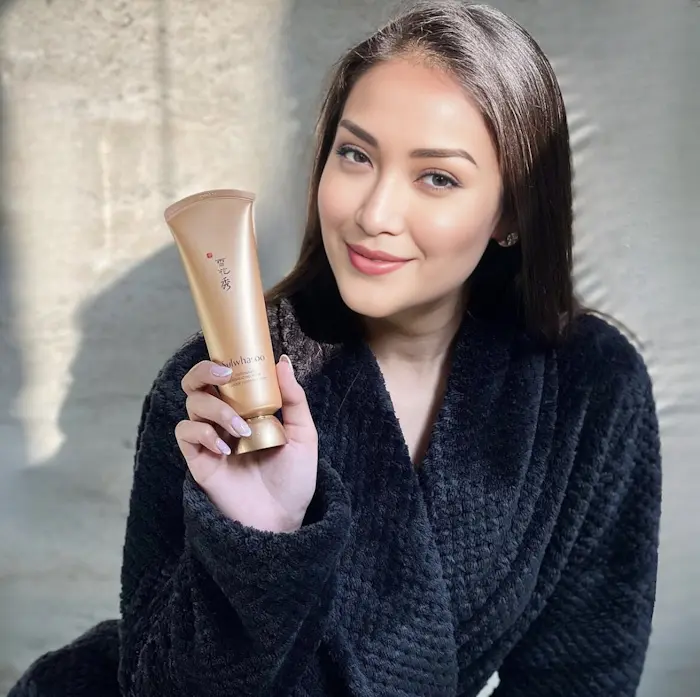
Sulwhasoo also has a ginseng overnight treatment mask available. Sulwhasoo Overnight Vitalizing Mask is applied at the final step of your evening skincare routine and washed off in the morning. All the powerful ingredients, including ginseng, work while you sleep, and you wake up with radiant-looking skin.
Again, this Sulwhasoo skincare product contains many other hanbang ingredients, such as:
- Squalane;
- Walnut seed extract is an ingredient that can strengthen the skin’s barrier;
- Honey;
- Cacao extract;
- Licorice root extract;
- Sacred lotus flower extract that has photoprotective effects against UVB exposure.
This vitalizing cream has a smooth texture, making it easy to spread onto your skin. Sulwhasoo Overnight Vitalizing Mask moisturizes, and my skin feels amazingly smooth in the morning. This cream has a beautiful hanbang scent due to the natural hanbang ingredients.
Sulwhasoo Overnight Vitalizing Mask Ingredients List (last checked [current_year])
Water, Butylene Glycol, Glycerin, Cetyl Ethylhexanoate, 1,2-hexanediol, Squalane, Butyrospermum Parkii (Shea) Butter, Di-c12-13 Alkyl Malate, Cyclopentasiloxane, Dimethicone, Glyceryl Stearate, Cyclohexasiloxane, Trehalose, C14-22 Alcohols, Palmitic Acid, Stearic Acid, Cetearyl Alcohol, Hydrogenated Castor Oil Isostearate, Hydroxypropyl Starch Phosphate, Peg-100 Stearate, Dimethicone/vinyl Dimethicone Crosspolymer, C12-20 Alkyl Glucoside, Polyacrylate-13, Phytosteryl/behenyl/octyldodecyl Lauroyl Glutamate, C12-16 Alcohols, Acrylates/c10-30 Alkyl Acrylate Crosspolymer, Tromethamine, Fragrance, Xanthan Gum, Ziziphus Jujuba Fruit Extract, Glyceryl Caprylate, Juglans Regia (Walnut) Seed Extract, Limonene, Polyisobutene, Scutellaria Baicalensis Root Extract, Hydrogenated Lecithin, Morus Alba Root Extract, Disodium Edta, Ethylhexylglycerin, Dextrin, Theobroma Cacao (Cocoa) Extract, Honey, Linalool, Polysorbate 20, Nelumbo Nucifera Flower Extract, Polygonatum Officinale Rhizome/root Extract, Rehmannia Glutinosa Root Extract, Paeonia Albiflora Root Extract, Lilium Candidum Bulb Extract, Sorbitan Isostearate, Panax Ginseng Root Extract, Punica Granatum Fruit Extract, Propanediol, Citronellol, Citral, Geraniol, Myristic Acid, Arachidic Acid, Glucose, Benzyl Benzoate, Glycyrrhiza Uralensis (Licorice) Root Extract, Tocopherol, Punica Granatum Flower Extract.
Ingredients referred from the Sulwhasoo official website.
Herbs Humectant/Moisturizing Brightening Fragrance
Conclusion
Hanbang (the traditional herbal medicine of Korea) is increasingly finding its way into Korean skincare products – with entire brands dedicating themselves to providing skincare products with quality hanbang ingredients and formulations (often based on ancient recipes).
Historically, ginseng is one of the most widely used hanbang ingredients, and there is, therefore, no surprise that this herb is the star feature in many hanbang skincare products.
The active constituents of ginseng and its benefits for the skin have been widely studied, especially concerning anti-aging. The main active compounds of ginseng are ginsenosides, with over 100 identified.
Products containing ginseng have multiple benefits for the skin. In particular, ginseng is highly effective at improving the appearance of fine lines and wrinkles and preventing UV radiation-induced skin damage (believed to occur through the suppression of collagen destruction and up-regulation of hyaluronic acid generation.
Research also shows promising evidence that ginseng effectively treats acne and fading hyperpigmentation.
There are many Korean skincare products with ginseng available to choose from. Your skin can benefit from ginseng no matter your age or budget, with the choice ranging from high-end luxury products to more affordable mainstream products.
Surely, we’ll see more and more ginseng and other hanbang ingredients in Korean skincare products in the future!
Ginseng is a powerful root. Always consult your physician before taking ginseng supplements, especially if you are already on medication.
Show Me Proof
- Scalbert, Augustin, Ian T. Johnson, and Mike Saltmarsh. “Polyphenols: antioxidants and beyond.” The American journal of clinical nutrition 81, no. 1 (2005): 215S-217S.
- Kim, Ji Hye, Young-Su Yi, Mi-Yeon Kim, and Jae Youl Cho. “Role of ginsenosides, the main active components of Panax ginseng, in inflammatory responses and diseases.” Journal of ginseng research 41, no. 4 (2017): 435-443.
- Yang, Yong, Changhong Ren, Yuan Zhang, and XiaoDan Wu. “Ginseng: an nonnegligible natural remedy for healthy aging.” Aging and disease 8, no. 6 (2017): 708.
- Kim, Young Gon, Maho Sumiyoshi, Masahiro Sakanaka, and Yoshiyuki Kimura. “Effects of ginseng saponins isolated from red ginseng on ultraviolet B-induced skin aging in hairless mice.” European journal of pharmacology 602, no. 1 (2009): 148-156.
- Hou, Joon Hyuk, Hyunjung Shin, Kyoung Hwa Jang, Chae Kyu Park, Bonsuk Koo, Hyeji Shin, Soon Hong Yuk, and Ki Yong Lee. “Anti‐acne properties of hydrophobic fraction of red ginseng (Panax ginseng CA Meyer) and its active components.” Phytotherapy Research 33, no. 3 (2019): 584-590.
- Song, Margaret, Je-Ho Mun, Hyun-Chang Ko, Byung-Soo Kim, and Moon-Bum Kim. “Korean red ginseng powder in the treatment of melasma: an uncontrolled observational study.” Journal of Ginseng Research 35, no. 2 (2011): 170.
- An, Sang Mi, Jae‐Sook Koh, and Yong Chool Boo. “p‐coumaric acid not only inhibits human tyrosinase activity in vitro but also melanogenesis in cells exposed to UVB.” Phytotherapy Research 24, no. 8 (2010): 1175-1180.
- Kim, Su-Yeon, and Gap-Soon Moon. “Photoprotective effect of lotus (Nelumbo nucifera Gaertn.) seed tea against UVB irradiation.” Preventive Nutrition and Food Science 20, no. 3 (2015): 162.
